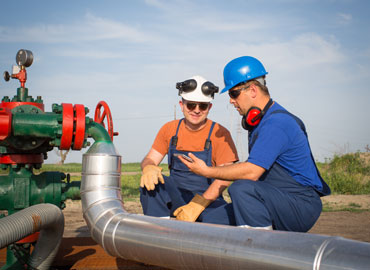Why Pipelines?

The Importance of U.S. Pipelines
America’s pipelines are a vital link connecting our abundant domestic oil and natural gas resources to refineries, chemical plants, businesses and consumers in the U.S. and around the globe.
Currently, the U.S. has approximately 320,000 miles of natural gas pipelines. Additionally, there are approximately 190,000 miles of hazardous liquid pipelines, which transport crude oil, refined products, petroleum products, liquefied carbon dioxide (CO2), and other highly volatile liquids (HVLs). That's enough pipeline to circle the Earth over 20 times. Both these amounts will steadily increase in coming years as domestic production grows and if the U.S. is able to export. Pipelines are needed to transport raw materials from the areas of production, which are sometimes very remote, to the refineries and chemical plants across the U.S. Then, they move the finished products to gasoline terminals, natural gas power plants and other end users.
All this movement of America’s energy requires a conscience effort by companies to ensure their operations are safe to both humans and the environment. Operators have invested financial resources to ensure their infrastructure is reliable, including spending over $2.2 billion in 2014 to evaluate, inspect and maintain pipelines. Dedicated personnel are also devoting their time creating and publishing API Recommended Practices for the industry to prevent and mitigate pipeline cracking, implement appropriate leak detection techniques, and develop and employ safety management systems.
Furthermore, the U.S. economy is profiting from the pipeline expansion work. Billions could be added to the economy each year because of new projects. Financial resources will also be needed to sustain the existing infrastructure, which not only includes pipelines, but also pumps, compressors, and storage facilities. Jobs will be created, too, as a result of the infrastructure need in the U.S. The industry could support approximately a million jobs on an average annual basis.

